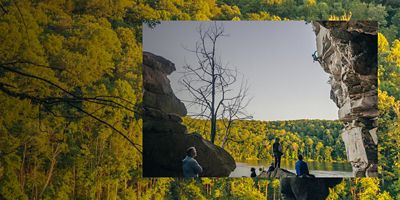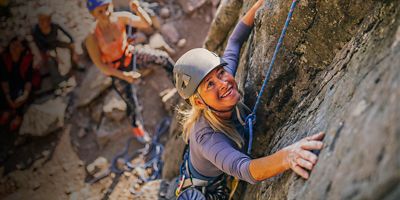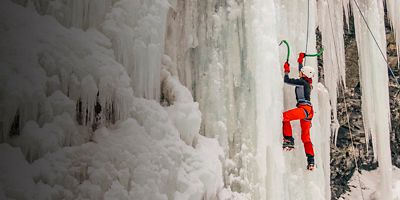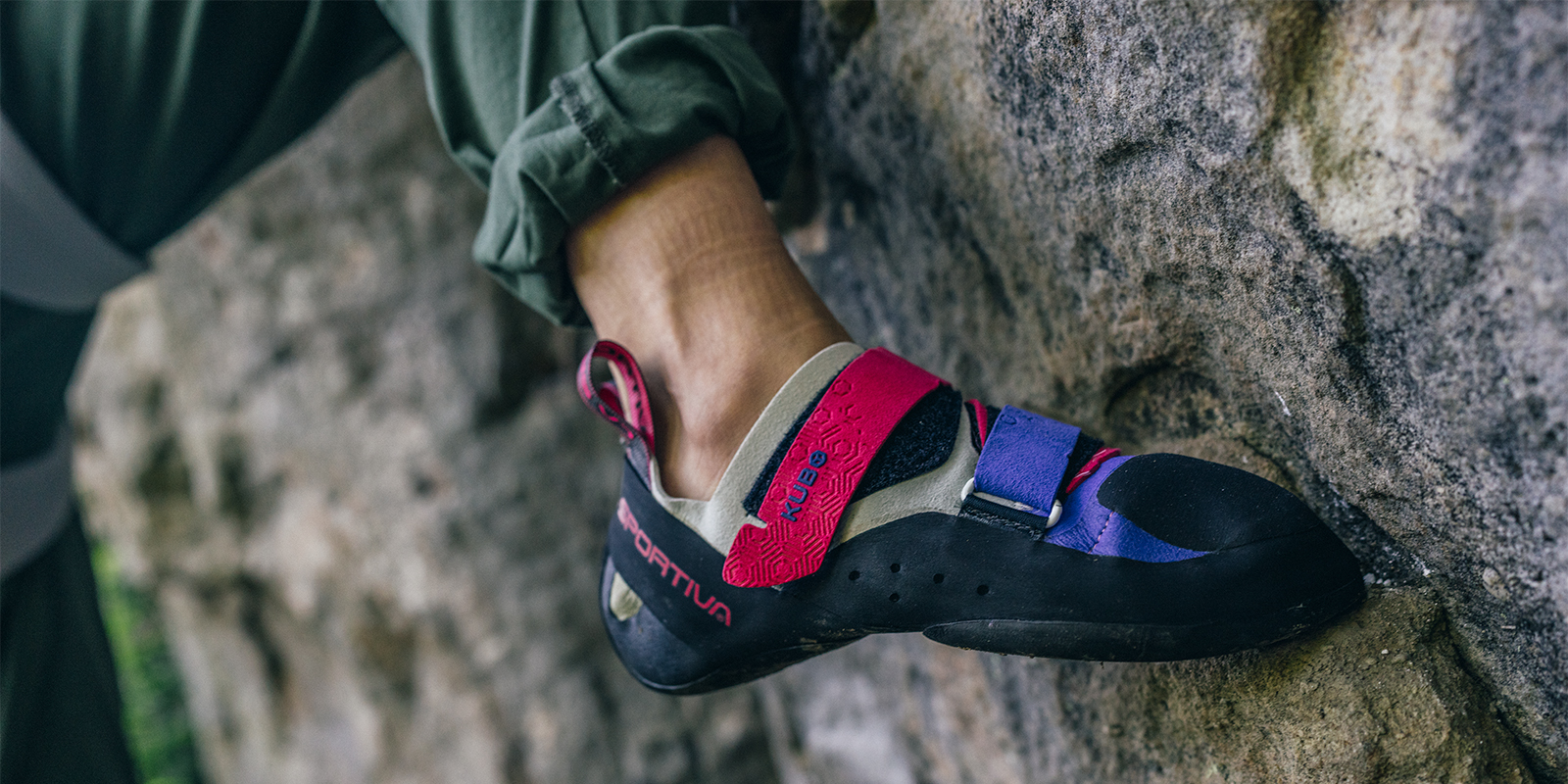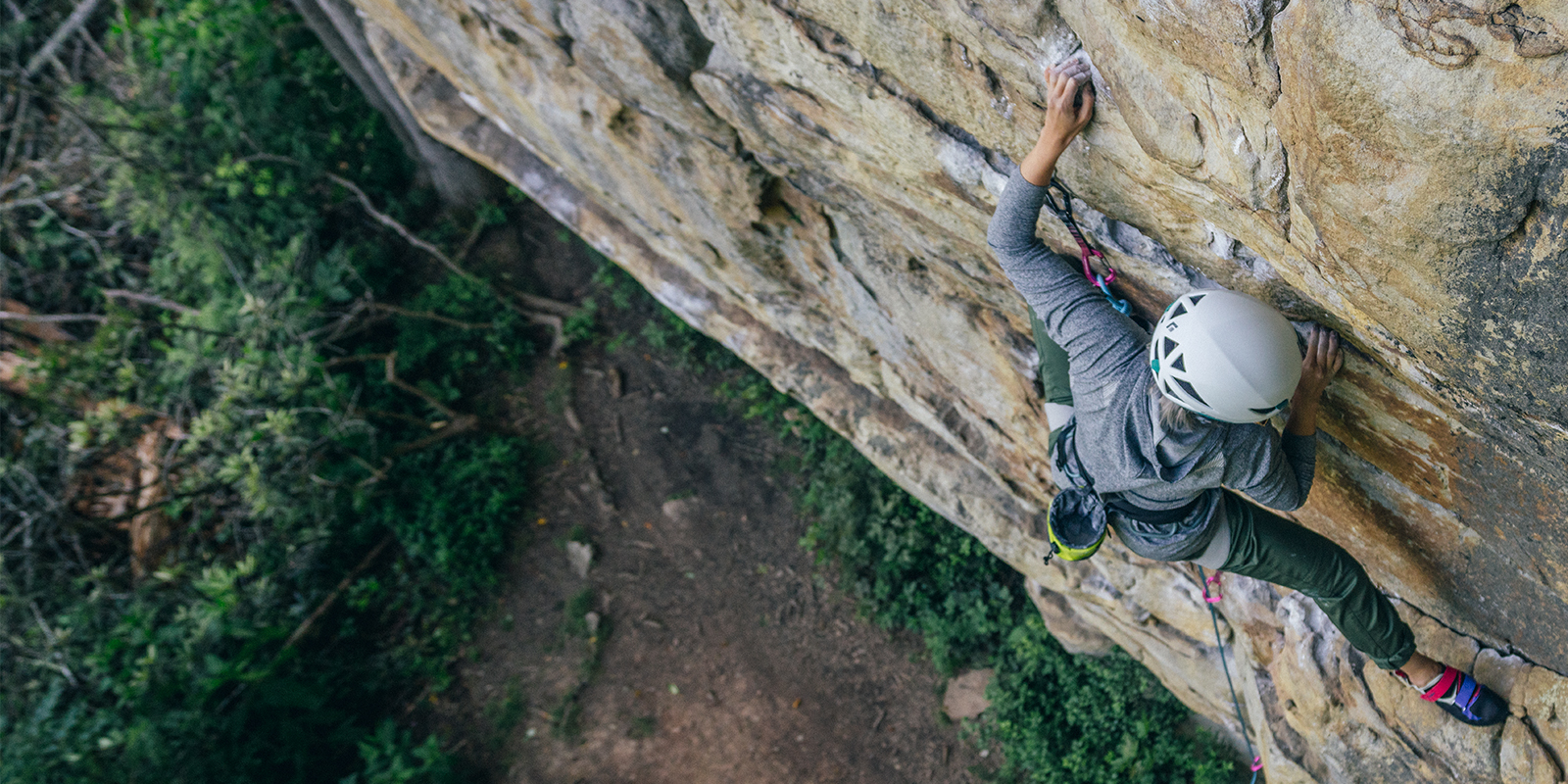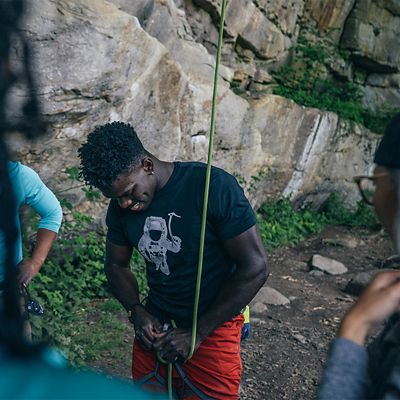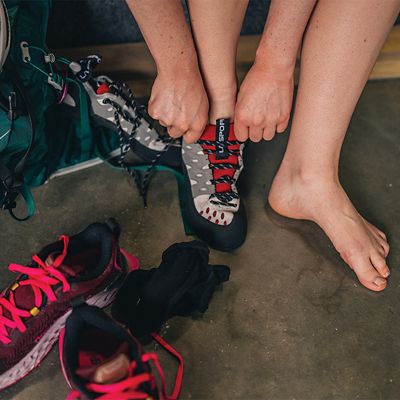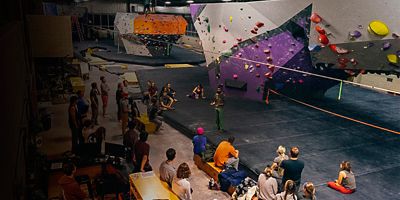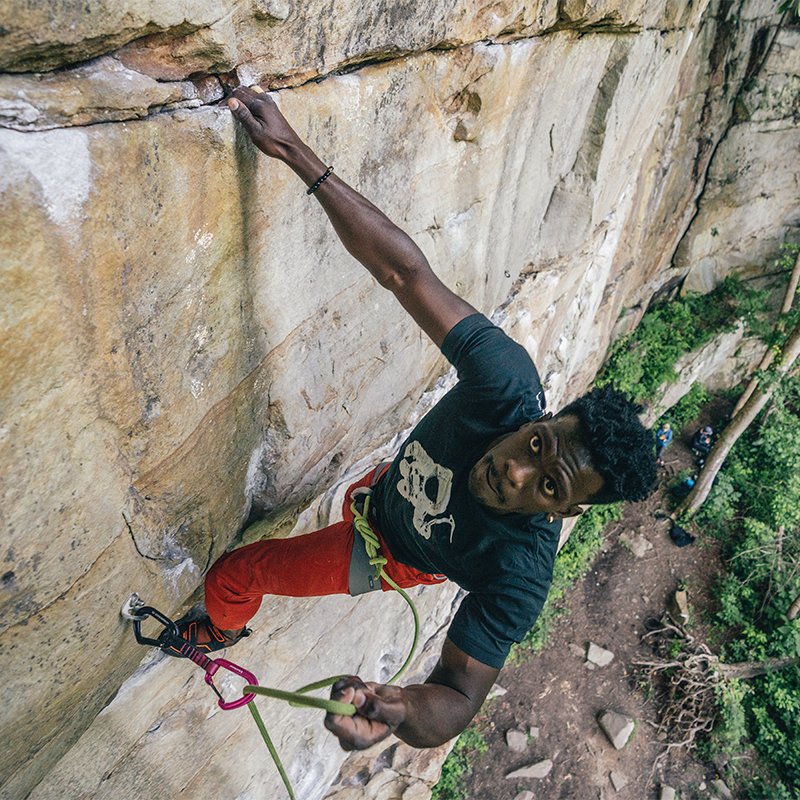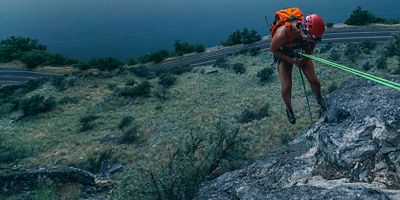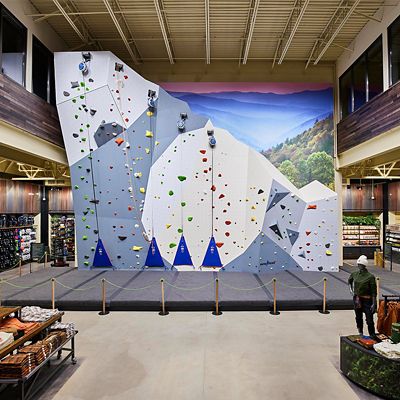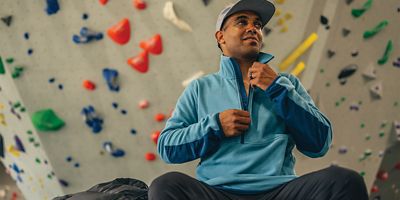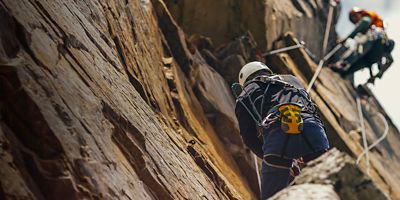
When most people think of outdoor adventure, they think about climbing mountains. Perhaps it’s no wonder: Mountaineering has held a special place in Western adventure mythology since the 18th century, when climbers first started vying for first ascents of big European peaks like Mont Blanc and the Matterhorn. By now, most of the earth’s iconic mountains have been climbed, but there’s always been something special about reaching a peak’s summit, whether you’re the first or the 1001st to do it. The challenge, the sweeping views, and the unique sense of exploration have a way of making us feel small. Mountaineering has a unique power to humble us—and help us realize what we’re truly capable of—all at the same time.
The good news is that you don’t have to have a ton of gear or technical skills to experience that sense of awe and empowerment. Likewise, you don’t have to climb the Matterhorn or Mount Everest to call yourself a mountaineer. That’s because “mountaineering” is actually a fairly broad term. It encompasses peak-bagging, high-pointing, alpine climbing, and an array of other summit-seeking activities that take place in mountainous terrain. The sport’s wide range means that as long as you have some decent fitness and outdoor know-how, you’ve got what you need to get started.
This guide will cover everything you need to launch into your first mountaineering objectives, including:
- The best way to learn mountaineering
- How to understand mountaineering grades
- Essential skills for mountain travel
- 5 common mistakes new mountaineers make
- Essential apparel and gear
The Best Way to Learn Mountaineering
Many of the world’s greatest mountaineers got their starts in their own backyards. Like any complex pursuit, mountaineering is a progression. But good fitness and strong skills aren’t the only things you’ll need to develop. To be a competent mountaineer, you’ll also need good mountain sense, i.e., confidence with mountainous terrain, conditions, and risk management. Mountain sense can take years—if not decades—of experience to develop. That said, it’s never too late to get started.
Start with basic fitness
Begin with hiking and/or trail running in the woods or hills around your home. This will help you build an aerobic base and strengthen the muscles of your legs and core. Eventually you’ll progress to weighted training hikes, slowly increasing your weight and mileage to simulate what you hope to accomplish on your intended objective.
Build confidence outdoors
If you’re looking to become a well-rounded mountain explorer, consider camping and backpacking to improve your emergency skills, layering acumen, and navigational abilities. If you hope to do some scrambling or light climbing, join a rock climbing gym. If you hope to cross glaciated terrain or do any snow climbing, book a mountaineering course in Colorado or the Pacific Northwest with a reputable guide service to learn the requisite skills.
Plan your first objectives
When you feel ready to start tackling your first peaks, plan a trip for summer on the best-weather day you can find. If you’re traveling far from home, give yourself a several-day window just in case it rains one of those days. Also, consider reaching out to a certified guide service for your first few outings. You can learn a lot of technical movement skills on the trail or in the rock climbing gym, but there’s no substitute for in-situ instruction from a professional.
Progress slowly
It’s best to start practicing on smaller, less-technical peaks (like those in the Appalachians) before progressing to higher-altitude summits (like those in Colorado), or more technical peaks, like the small volcanoes and ridge traverses of the Pacific Northwest. Any time you venture somewhere with new terrain, flora, fauna, or weather systems, going with a guide—at least for that first outing—is highly recommended.
How To Understand Mountaineering Grades
Mountaineering can encompass anything from hiking up a level dirt trail to a summit, to tackling steep, icy terrain with ice axes and crampons. Because there’s so much variation, hikers and climbers use standardized grading systems to denote the difficulty of certain routes. There’s one for terrain and one for commitment level. (Technical climbing, snow climbing, and ice climbing all have their own grading systems, too, but you’ll learn more about those when you get into those disciplines at a higher level.)
Terrain classes for hiking and climbing
- Class I: Straightforward hiking on level trail.
- Class II: Steep hiking. A fall could result in injury but isn’t likely to be deadly. Ropes are generally considered unnecessary.
- Class III: Steep terrain with some exposure. A fall could be dangerous, but experienced mountaineers and climbers generally proceed without ropes.
- Class IV: Near-vertical terrain with serious exposure. A fall here could be deadly. Ropes and/or expert-level climbing skills are often recommended.
- Class V: Vertical terrain. Falls are usually deadly, and ropes and serious technical skills are highly recommended.
Commitment grades for mountaineering objectives
- Grade I: The objective takes most parties a few hours to complete.
- Grade II: The technical part of the objective takes most parties a half day to complete.
- Grade III: The technical part of the objective takes most of a day.
- Grade IV: Expect a full day of technical climbing.
- Grade V: You’ll probably have to spend the night on the route.
- Grade VI: Most parties take two or more days to complete the route’s technical portion.
- Grade VII: Extremely remote objectives that take multiple days to complete.



